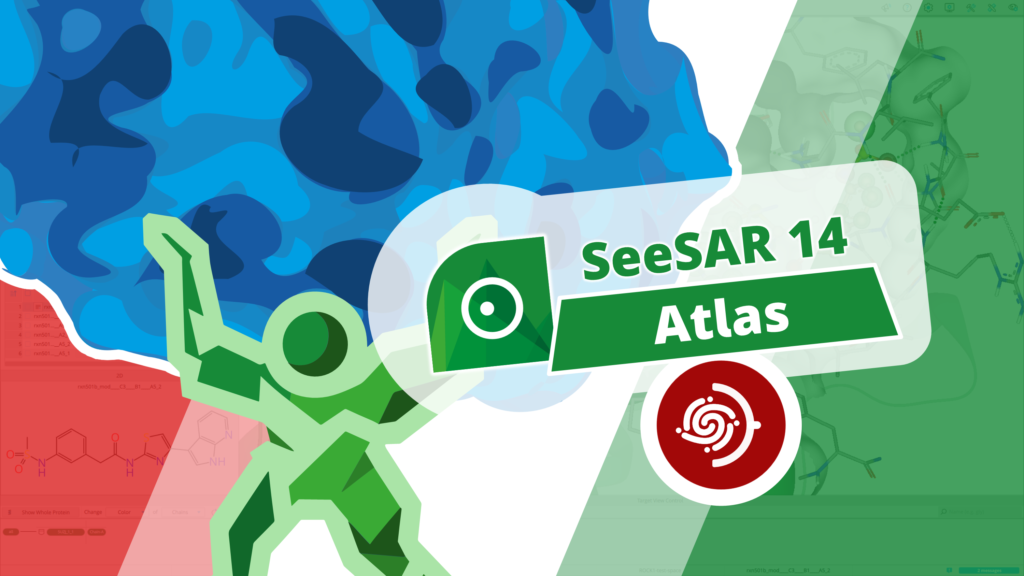We’re excited to introduce SeeSAR 14 Atlas, offering a sophisticated solution for screening trillion-sized Chemical Spaces using Chemical Space Docking™ (C-S-D). This next-generation approach focuses on synthons, constructing promising drug candidates by exploring ultra-vast Chemical Spaces while using only a fraction of the computational resources required by traditional methods.
SeeSAR 14 also includes native mmCIF file support, aligning with the growing adoption of this format for handling large macromolecular structures. Additionally, enhanced template molecule handling allows more efficient docking workflows and customization and more!
Key Features
- Chemical Space Docking™ (C-S-D): Seamlessly integrated into SeeSAR’s new Space Docking Mode, this approach efficiently screens ultra-large chemical spaces, making it easier to find potential drug candidates by focusing on high-potential starting points and building them into full compounds. C-S-D unlocks vast molecular diversity while reducing the time and computational power needed to explore new chemical territories.
- Native Support for mmCIF Files: As the structural biology community moves toward the mmCIF format, SeeSAR 14 natively supports both import and export of these files, ensuring you work with the most accurate and data-rich formats. This update enhances the handling of complex macromolecular structures and provides a future-proof solution as mmCIF becomes the new standard.
- Improved Template Molecule Handling: Loading template molecules into SeeSAR’s Docking Modes or Similarity Scanner is now more optimized, with a dedicated template table for easy visualization and customization. Researchers can seamlessly transfer molecules across modes, streamlining the drug discovery process.
Chemical Spaces for Drug Discovery
With SeeSAR 14 Atlas, users can explore various partner Chemical Spaces, including AMBrosia, CHEMriya, eXplore, and REAL Space by Enamine. These billion- and trillion-sized collections contain unprecedented molecular diversity, providing a wealth of opportunities to discover new chemotypes and scaffolds.
Using C-S-D, users can explore vast combinatorial Chemical Spaces and access BioSolveIT’s Knowledge Space, generating novel compounds with greater efficiency.
For more details, visit the SeeSAR ‘Atlas’ spotlight page.





